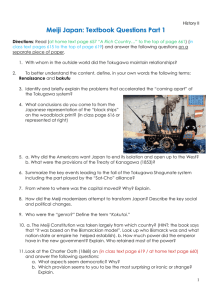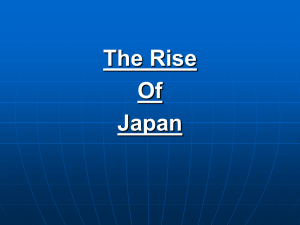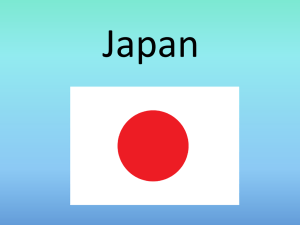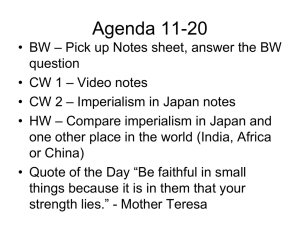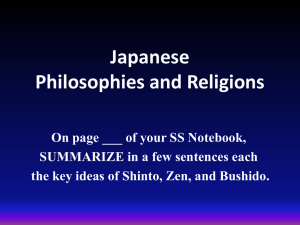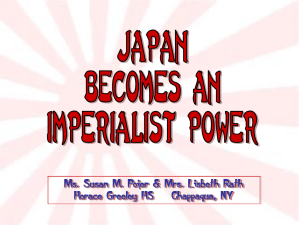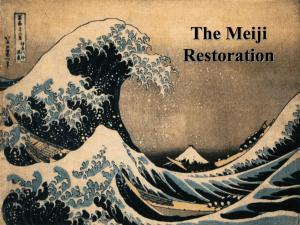Document 15512608
advertisement
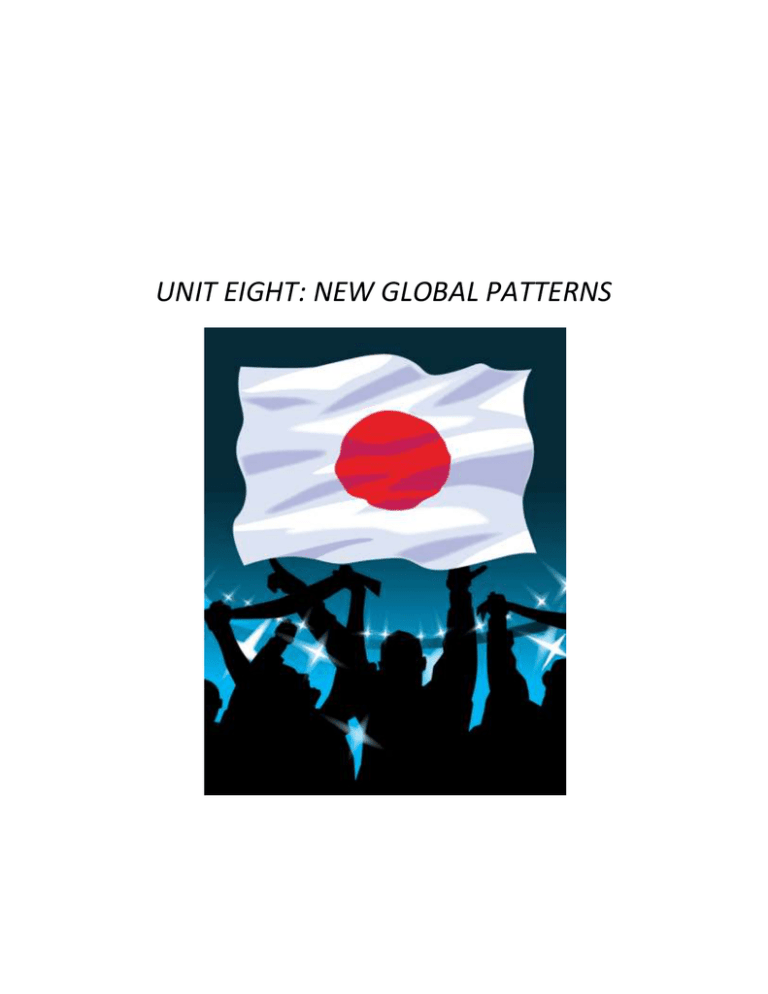
UNIT EIGHT: NEW GLOBAL PATTERNS Unit 8: NEW GLOBAL PATTERNS (Chapter 26) Terms: Define the following as they pertain to the historical topic at hand. Term Define Importance (why is this significant?) Tokugawa Shogunate Treaty of Kanagawa Meiji Restoration Diet Zaibatsu Russo-Japanese War Caudillos Economic Dependence La Reforma Peonage Not necessary do not answer Monroe Doctrine People: Identify the following individuals Individual(s) Commodore Matthew Perry Emperor Meiji José Rizal Emilio Aguinaldo Santa Anna Rudyard Kipling Cecil Rhodes Location Significance/ importance to history Map Activity: Place the kingdoms/places listed below on the map. Create a color key to demonstrate the coordination. Charts: Complete the chart using information from class as well as your textbook. A) Changes to Japan under the Meiji Restoration Social Changes Political Changes Economic Changes B) Motivations for Colonization Region Imperialist Power Reasons for Colonization ________________________ Why did France and Great Britain Respect Siam’s independence? Indonesia Malaya Indochina Siam Hawaii Philippines Outside Sources: Use the documents to answer the following questions. Use complete sentences. Source: Encyclopedia entry on the impact of the new Japanese constitution “The government led the way in this, building railway and shipping lines, telegraph and telephone systems, three shipyards, ten mines, five munitions works, and fifty-three consumer industries (making sugar, glass, textiles, cement, chemicals, and other important products). This was very expensive, however, and strained government finances, so in 1880 the government decided to sell most of these industries to private investors, thereafter encouraging such activity through subsidies and other incentives. Some of the samurai and merchants who built these industries established major corporate conglomerates called zaibatsu, which controlled much of Japan's modern industrial sector. The government also introduced a national educational system and a constitution, creating an elected parliament called the Diet. They did this to provide a good environment for national growth, win the respect of the Westerners, and build support for the modern state. In the Tokugawa period, popular education had spread rapidly, and in 1872 the government established a national system to educate the entire population. By the end of the Meiji period, almost everyone attended the free public schools for at least six years. The government closely controlled the schools, making sure that in addition to skills like mathematics and reading, all students studied "moral training," which stressed the importance of their duty to the emperor, the country and their families. The 1889 constitution was "given" to the people by the emperor, and only he (or his advisers) could change it. A parliament was elected beginning in 1890, but only the wealthiest 1 percent of the population could vote in elections. In 1925 this was changed to allow all men (but not yet women) to vote.” 1) What were three specific things the Japanese government did to reform Japan during the Meiji period? 2) How would the constitution change Westerners’ views of Japan? Summary Questions: Answer the following questions in 3+ full sentences 1) Explain the motivations behind Japan’s modernization 2) Explain the impact of imperialism on each of the following regions: Japan, Southeast Asia, Latin America, and Western Europe.
